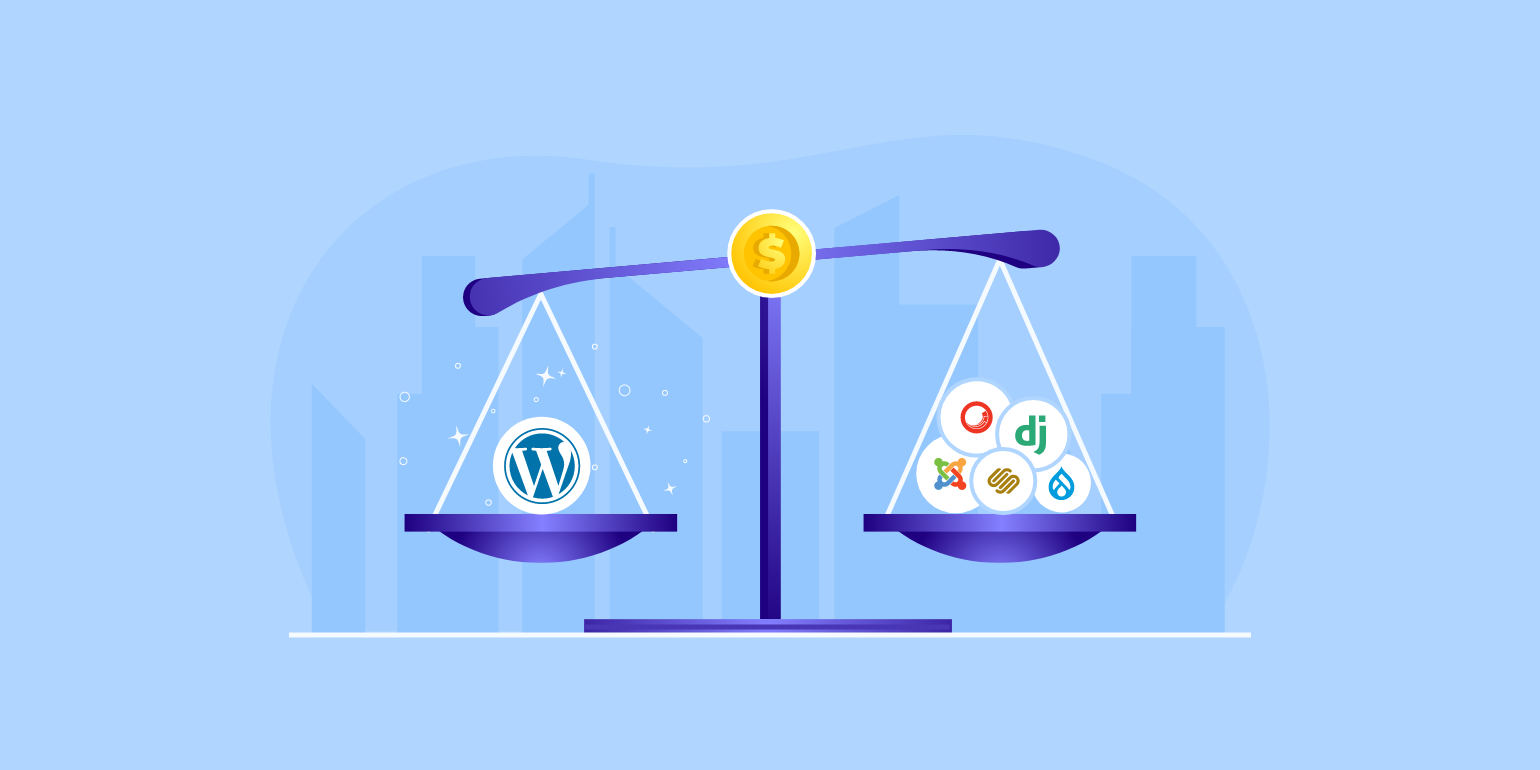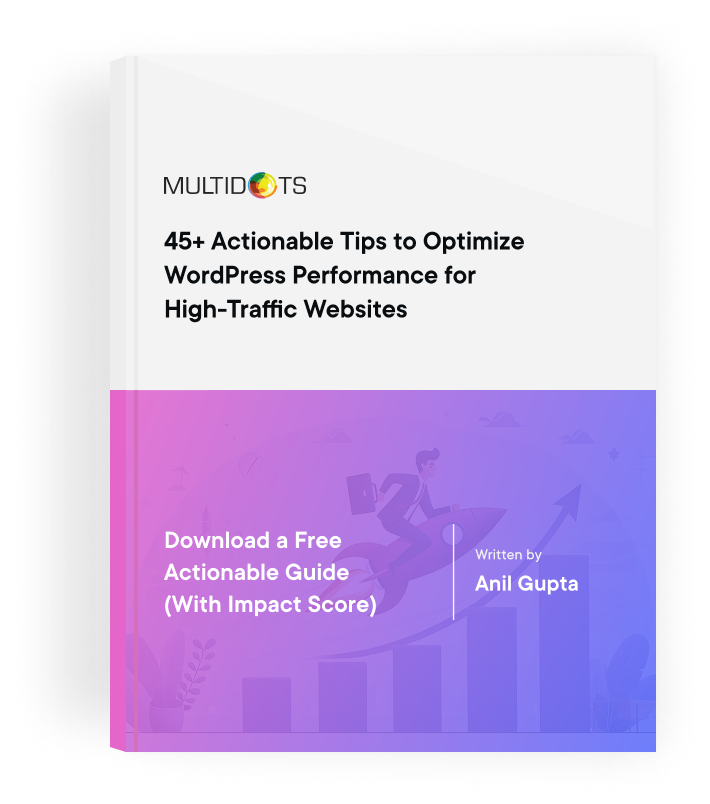Cost of Ownership: WordPress vs Other Enterprise CMS
Analyze the cost of ownership of WordPress in comparison to other enterprise CMS platforms for better budget planning

Table of Contents
The total cost of ownership of a Content Management System (CMS) for enterprises is a continuous investment, consisting of tangible and intangible components.
Tangible costs include the initial setup and ongoing maintenance, while intangible costs can range from the system's flexibility to its impact on employee productivity and satisfaction.
In this article, let's delve into a comparative analysis of the cost of ownership between WordPress and other enterprise CMS platforms, focusing on both tangible and intangible aspects.
Tangible cost of Ownership: WordPress vs Other Enterprise CMS
When we talk about the tangible cost of CMS ownership for enterprises, we're referring to the concrete, measurable expenses involved. These costs are straightforward to calculate and include elements like initial setup, subscription fees, and the cost of maintaining a technical team.
The initial setup costs depend on various factors such as the number of users, the volume of content, and the functionalities of the website. Here are the average initial setup costs for the most commonly used enterprise CMS platforms:
| CMS Platform | Initial Setup Cost Range |
|---|---|
| WordPress | $30 - $3,000 |
| Drupal | $4,000 - $10,000 |
| Sitecore | $40,000 - $100,000 |
| Joomla | $150 - $3,000 |
| Django | $3,000 - $30,000 |
| Squarespace | $500 - $5,000 |
Apart from the initial costs, enterprises have to continually pay subscription fees for their CMS and maintain a technical team to keep it up and running.
Sitecore and Squarespace have the highest subscription costs since they are not open-source platforms like WordPress, Drupal, and Django.
Among the open-source platforms, WordPress, on average, incurs the lowest cost in terms of technical and workflow maintenance costs due to its widespread adoption leading to a larger pool of engineers and technical professionals familiar with the platform.
The tangible cost savings with WordPress are significant. The platform not only offers a cost-effective initial setup but also keeps ongoing costs low, thanks to its user-friendly design and extensive community support. These financial advantages are a major reason why many enterprises are migrating to WordPress.
Intangible Cost of Ownership: WordPress vs Other Enterprise CMS
When we discuss the intangible costs of CMS ownership, we're talking about factors that indirectly affect your bottom line but are harder to quantify.
These include the four following aspects.
1. Learning Curve for Non-Technical Professionals
Complex platforms like Sitecore and Django require non-technical members of a content team to spend time and effort learning or collaborating with technical teams before they can create and manage content efficiently.
This is where work needs to be briefly paused as the "figuring it out along the way" strategy can lead to costly mistakes.
WordPress mitigates this with its intuitive no-code block-based content editor, making it easier for non-technical team members to quickly become proficient on their own.
2. Time to Adoption for New Team Members
Enterprise-wide adoption of a CMS platform is essential for making the most out of various processes such as content production. Primarily, the time to adoption depends on two factors: the graphical user interface (GUI) of the platform and the support docs.
WordPress scores high on user-friendliness, which reduces the time it takes for new team members to get up to speed. Additionally, the platform has a robust community and numerous forums that offer valuable insights, tips, and troubleshooting advice, further easing the adoption process.
3. Content Management Workflow
A content management workflow encompasses everything from ideation to publication. Usually, enterprises depend on a myriad of tools for various phases. For instance, a team might use Google Docs for drafting and Zoom for reviewing multimedia content.
However, juggling multiple tools makes the workflow slow, to say the least.
Fortunately, the upcoming Gutenberg Phase 3 update is set to convert WordPress from a CMS to a collaborative workspace by enabling Google Docs-style collaboration. This will make content management more efficient, thereby saving costs for enterprises in the long run.
4. Flexibility to Expand Website Functionality
As enterprises grow, it isn’t uncommon for them to expand their business, whether it is by providing more services or targeting a new market. Either way, it requires additional functionalities on their website.
This is where WordPress, again, shines. Whether you need to add an SEO tool, a social media feed, or a complex e-commerce solution, there's likely a plugin for that. This flexibility allows you to adapt and grow without incurring the high costs of custom development.
The Verdict
When it comes to choosing an enterprise CMS, the decision isn't just about the upfront costs; it's about the long-term value the platform brings to your organization. WordPress stands out as the superior option for several compelling reasons.
Firstly, the initial setup costs for WordPress are significantly lower than those of other enterprise CMS platforms like Drupal, Sitecore, and Django. Even the ongoing maintenance costs are minimal, thanks in part to a wide pool of affordable technical talent and a plethora of low-code and no-code plugins.
Secondly, the intangible costs are also in WordPress's favor. Its user-friendly interface and robust community support make it easier and quicker for team members to adapt. Upcoming features like Gutenberg Phase 3 promise to make content collaboration as seamless as using Google Docs, further enhancing its value proposition.
Lastly, the flexibility offered by WordPress's extensive plugin ecosystem means that the platform can grow with your business, adapting to your needs without requiring expensive custom development.
In conclusion, WordPress offers a blend of low tangible and intangible costs, robust features, and scalability that make it an economically wise and strategically sound choice for enterprises. Contact us today to get started with WordPress on the right foot for your enterprise.
Schedule a consultation call and discuss your migration requirements.
Contact Us
